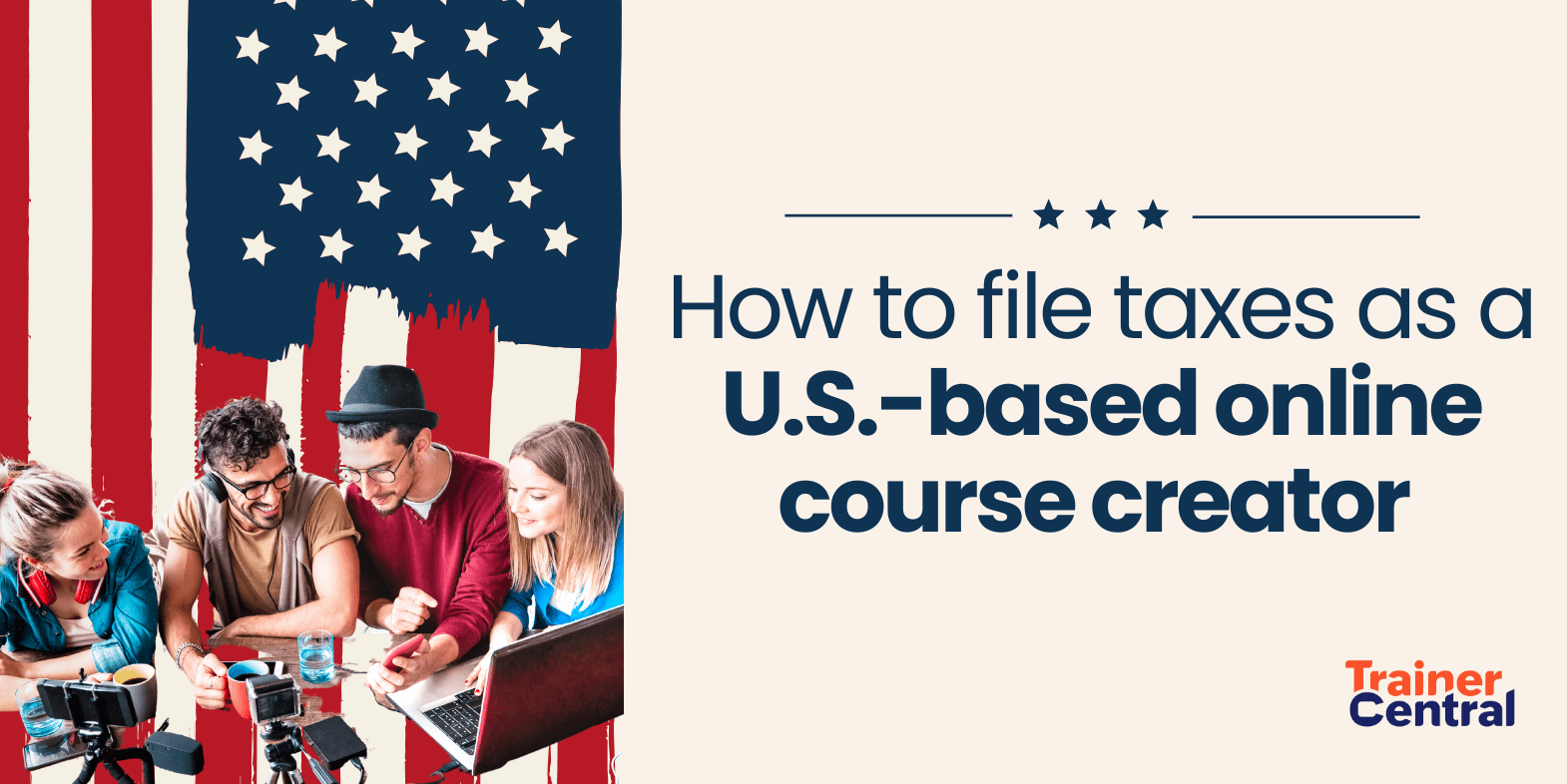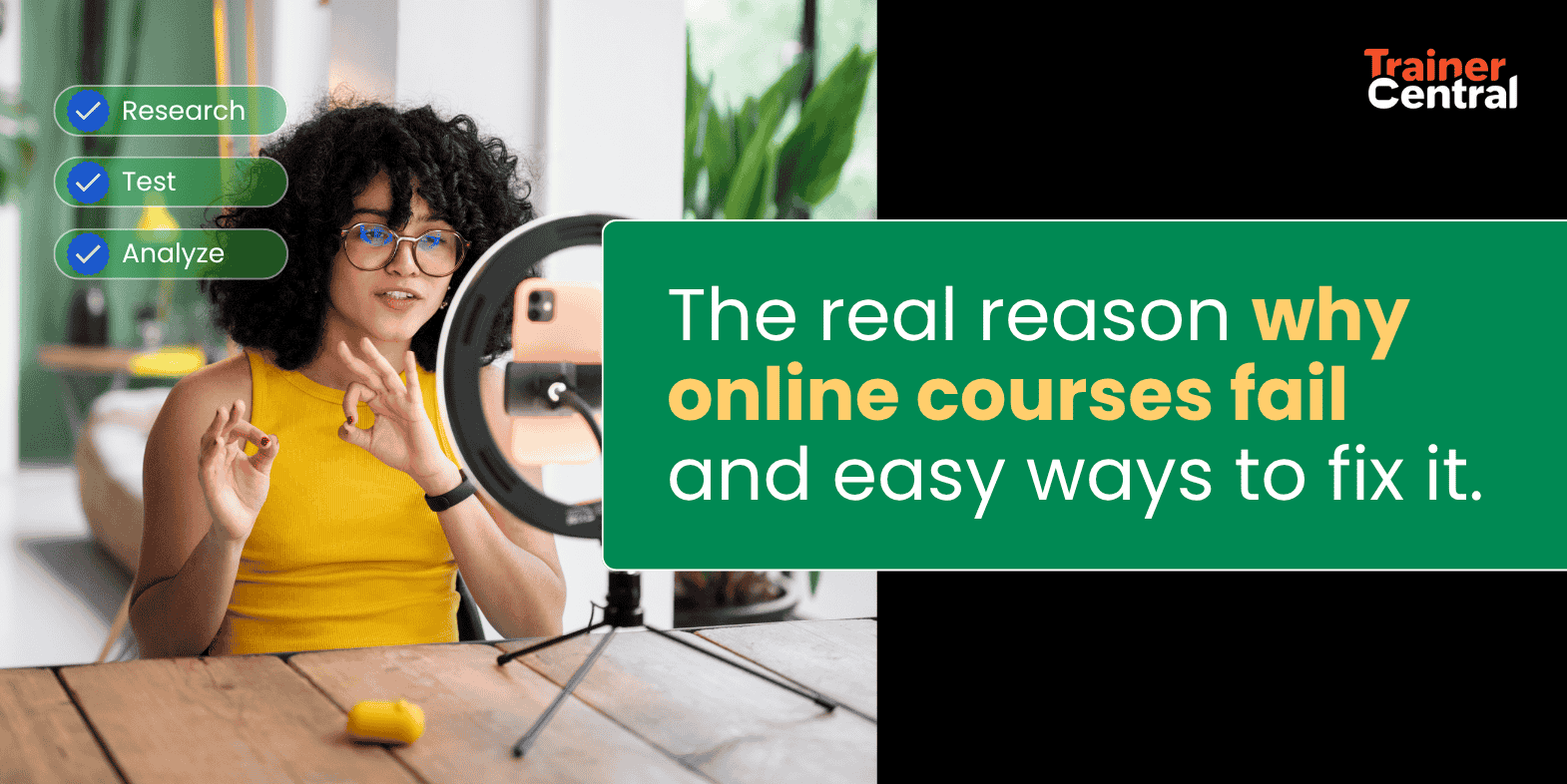- HOME
- Building a business
- How to create a course outline [Free template attached]
How to create a course outline [Free template attached]
- Last Updated : January 2, 2024
- 2.2K Views
- 5 Min Read
"How do I get started in creating my online course?" This is a common question that arises among almost every first-time course creator. You've figured out your niche and everything, but are stuck without knowing how to begin. A course outline may help you with that. Let's delve into the concept of a course outline through a story.
Treasa Chester, a hypothetical chef in the suburbs of Texas, had finally decided to share her mastery of cooking with budding chefs worldwide. She had chosen an online course platform, set up a distraction-free workspace, and even purchased a high-quality web camera to broadcast cooking classes in real time.
 However, she became overwhelmed when she sat down to draft lessons for her online course. Though she was great at cooking, she was not sure what the first chapter in her course should include or what type of materials should be added under each lesson.
However, she became overwhelmed when she sat down to draft lessons for her online course. Though she was great at cooking, she was not sure what the first chapter in her course should include or what type of materials should be added under each lesson.
She spent hours creating lessons, uploading course videos, deleting and re-uploading them, and finally giving up. She had thought it'd be easier to structure her online course, given her experience in cooking. To understand why she was struggling, Treasa turned to the internet.
She spent the next couple of weeks reading case studies of successful online educators and understanding students' attitudes towards online classes. This is when she stumbled upon the concept of course outline.
What is a course outline?
A course outline or a lesson plan is simply a guide or roadmap for educators, outlining what their learners should know by the end of their course, which teaching methodologies should be employed, and how their students' learning outcomes will be measured.
Though course outline has been commonly used in traditional education, some minor tweaks can make it a suitable strategy for online learning too.
The importance of having a course outline
A course outline helps teachers and educators pave a path for their learners and provide them with a clear understanding of the learning goals for each lesson, and how their understanding of course concepts will be evaluated.
Having a course outline for your online course also:
Boosts engagement and motivation among learners.
Improves trainers' confidence.
Simplifies the structuring of course curriculum.
Helps teachers manage classroom time efficiently.
Empowers learners to track their progress effectively.
How to create a course outline
Now that Treasa understood the basics of a course outline and why she needed it for her online course, she dove deeper to learn how to create a plan. After coming across several articles on the elements of planning a lesson, Treasa decided to collate them and create her own formula.

Here's a step-by-step process devised by Treasa to help course creators like you shape your course outline.
Step 1: Craft your lesson goals
The first step is to create objectives for each lesson. This helps learners understand what to expect and empowers them to easily track their progress.
Consider adopting the SMART criteria to determine the goals for your lessons. This criteria ensures that your course objectives are Specific, Measurable, Attainable, Relevant and Time-bound.
Let's say Treasa wanted her first course to be about the basics of cooking skills, with the first chapter in her course focusing on techniques for chopping different vegetables.
Her lesson objective could be something like this:
To understand the difference between a regular dice and a fine slice, and to learn how to precisely chop onions, tomatoes, potatoes, and herbs.
Step 2: Add relevant course materials
Once the lesson objectives are well-planned, it's time to add relevant materials to the lessons.
Learning materials are important, as they make your course interesting and engaging. The materials take the form of videos, PDFs, presentations, or even snippets from an external site. They help trainers effectively illustrate and explain new concepts.
Taking the example of "techniques for chopping different vegetables" from the previous step, Treasa could share lesson materials, such as a video of different methods for holding a knife, or a PDF explaining the different techniques of slicing.
This would help her learners understand the core concept more easily, while bringing them closer to achieving the lesson goals.
Step 3: Plan the progress of virtual classrooms
A virtual classroom is a great way to engage and train your remote learners in real time. You can broadcast a video, explain concepts on a digital whiteboard, address learners' concerns on the go, and even have a one-on-one conversation.
Just like in a traditional classroom, it is crucial to plan and have a grasp over your lesson throughout the entire session. You can pre-upload all your materials to avoid any last-minute technical glitches, schedule polls, and plan the time needed to address learner questions.
 Here's what Treasa's routine before hosting a live session could look like:
Here's what Treasa's routine before hosting a live session could look like:
For an hour-long class on making mayonnaise, she would need to classify her tasks into 3 phases.
The pre-session phase: During this period, Treasa needs to clear her workspace, have the required ingredients ready by her side, upload the recipe file, and test her network.
During the session: Here, Treasa would need to split the entire hour to share the recipe, demonstrate the process of making the mayonnaise, and answer learners' questions.
The post-session phase: Once she ends her session, Treasa needs to clear her workspace, send the session recordings to learners who didn't attend class, and consider ways to re-purpose the session.
Classifying and planning each task gives you control over your session, helping you achieve the best results within a specific time frame.
Step 4: Devise the evaluation process
Motivating your learners is easy when they know what to expect out of a lesson and how their performance will be evaluated. Assignments, quizzes, and polls are a great way to evaluate your learners' grasp of your course content.
Map your lesson goals with your assessment process, so your learners will be confident they have mastered the lessons and absorbed all key points.
 The goal Treasa crafted for her first lesson was to understand the difference between a regular dice and a fine slice and to learn how to precisely chop onions, tomatoes, potatoes, and herbs.
The goal Treasa crafted for her first lesson was to understand the difference between a regular dice and a fine slice and to learn how to precisely chop onions, tomatoes, potatoes, and herbs.
Treasa could evaluate her learners by giving them assignments to either:
A. Upload a document file where they have outlined the difference between dicing and slicing.
Or
B. Upload pictures of vegetables they have chopped so Treasa can examine them and provide her feedback.
Deciding on the evaluation process and sharing it with your learners in advance will boost your learners' confidence, as they can accurately track their mastery of the course.
Step 5: Refine your teaching methodologies
While the previous four steps have to be followed before drafting your curriculum, the last step has to be done once learners complete your course.
Learning is a never-ending process and so is teaching. Gathering feedback from your learners, using it to refine your training strategies, and constantly updating your materials will help you keep your course relevant.
 Treasa might receive feedback suggesting she slow down during live sessions, or add a new lesson on trending dishes. She could incorporate this feedback to both improve her course delivery skills and keep herself updated on the latest cuisines.
Treasa might receive feedback suggesting she slow down during live sessions, or add a new lesson on trending dishes. She could incorporate this feedback to both improve her course delivery skills and keep herself updated on the latest cuisines.
Following this five-step process to create a course outline for her course, Treasa could help her learners experience visible progression in their culinary skills. A course outline, as noted earlier, is a road map that helps teachers avoid possible distractions and helps learners efficiently master new skills.
Here's a free course outline template to help course creators like you get started planning your lessons. Just use the PDF and edit the fields for each lesson, and you have got yourself a course outline for your online course!




